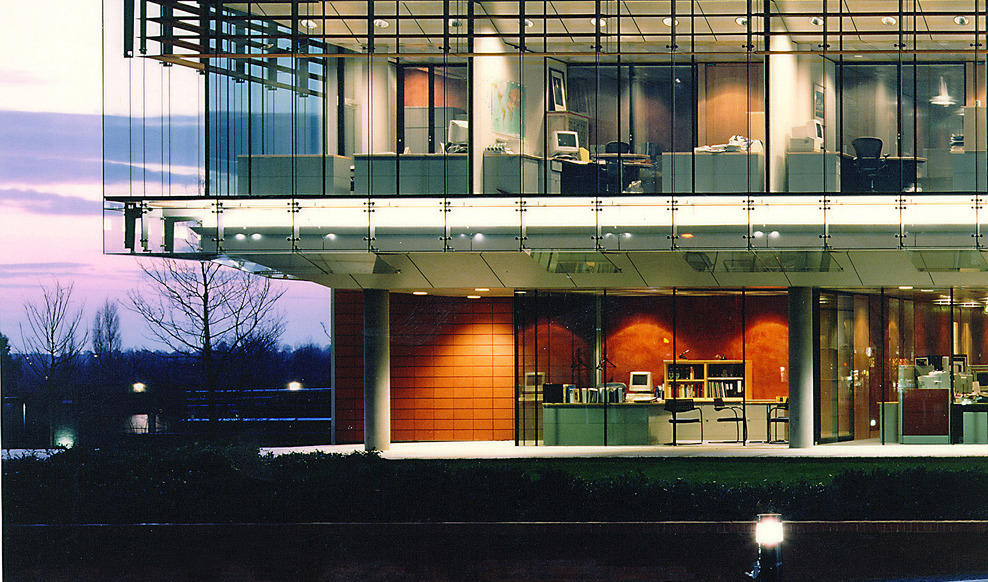
When New York City architect Curtis B. Wayne first started talking about “The Fourth Architecture,” it was clear he was not doing so to make friends. You do not write manifestos to make friends. You write them because of some perceived urgency, because the time is right.
As a long-standing practitioner, radio host, and graduate of Cooper Union and Harvard’s Graduate School of Design, he already has a lot of friends. What he’s interested in is saving architecture from the current orthodoxy of form-making over substance, or “sculpture you can live in.” “We are too wise for this,” writes Wayne.
In fact, I can go further. Judging from the little red book that has finally emerged from Wayne’s brain, appropriately titled, The Shape of Things that Work: The Fourth Architecture, I’m almost certain he set out to piss people off. But not without a purpose.
In Wayne’s conception, the First Architecture is the Hellenistic, the Second is the Gothic, and the Third is the modern - up to and including our contemporary, formal experimentation with software.
To get to the Fourth Architecture, as Wayne himself will tell you, architecture needs less self-congratulatory back slapping and more holding of feet to the fire, more self-criticism within our ranks.
In the book, he quotes his former professor and mentor, John Q. Hejduk: “The fundamental issue of architecture is that does it affect the spirit, or doesn’t it? If it doesn’t affect the spirit, it’s a building. If it affects the spirit, it’s architecture.”
Wayne argues that the present state of digital form-making is akin to mere decoration and that architecture needs to return to “shapes that work” - shapes that constitute responses to real environmental, economic, and social forces. Otherwise, as Hejduk would assert, it’s just building.
“Are architects the natural and logical integrators of the artistic with the technical? It can be argued that owing to our training we—above all other professions—“should” be the master builders, the master integrators. But instead we see the profession fractured by the self-identifying trends of so-called sustainability; the intrusion of pure form, driven by the complexities of shape-making made possible by computational generation; and the relegation of discussions of urbanism and social function to the “soft” professions of the social sciences. And yet, we architects can and should include all these aspects in our practice; we must, else we are merely makers of decoration.”

What then counts as Fourth Architecture? To begin with, it helps to look at what it is NOT. For exmaple, the Morphosis-designed New Academic Building for Cooper Union. Wayne calls it “an exemplary failure” because its signature enveloping screen system, designed to be computer-operable, does not work, and has thus been reduced to mere manually-operated decoration, a static façade.
For Wayne, true architecture is missing when form-making takes precedence over function and performance. The Morphosis case is an interesting one because it is an example of good intentions that ultimately failed. The building desperately wanted to be part of the Fourth Architecture, but fell short.
“The integration of functional form with the beautiful is as elusive as a conclusive definition of beauty itself,” says Wayne. This may be why there are so few examples of successful Fourth Architecture candidates. But looking back in time, he finds a few to illustrate his point: George Fred Keck’s Crystal House, RMJM’s Glaxo-Wellcome building, and the Helicon Building by Sheppard Robson Architects.


Wayne also looks at something called the HeliOptix Integrated Concentrating Solar Façade, developed by the Center for Architecture Science and Ecology and currently part of a proposed design by SHoP Architects for New York’s Fashion Institute of Technology. Wayne defines this as a wall determined by its intended function, a wall that works, as he would stress. The wall is comprised of pyramidal water-cooled modules that rotate and track the sun. Lenses concentrate sunlight onto photovoltaic cells.
The Fourth Architecture, then, that which expresses functional responses to the environment and human needs, doesn’t position style as a driving element – it is “style-less.” Though it could be argued this constitutes a style in its own right, it is style not for style’s sake, but as the result of integrated priorities.
Mr. Wayne’s little red book neatly crystallizes some of the major design issues confronting practice today. With the ability to make almost any shape or form through scripting, computation, parametrics, or simply push-me-pull-me and other plug-ins, he is arguing for a reason, for “shapes that work,” a return to architectural forms that have a purpose.
If this were the case, would we lose anything? What would we stand to gain in this post-parametric world? Or perhaps this is the highest potential for parametricism - and the form-making we have been seeing over the last few years is merely the first phase toward something new, toward The Fourth Architecture. Let’s hope so.

Guy Horton is a writer based in Los Angeles. In addition to authoring “The Indicator”, he is a frequent contributor to The Architect’s Newspaper, Metropolis Magazine, The Atlantic Cities, and The Huffington Post. He has also written for Architectural Record, GOOD Magazine, and Architect Magazine. You can hear Guy on the radio and podcast as guest host for the show DnA: Design & Architecture on 89.9 FM KCRW out of Los Angeles. Follow Guy on Twitter @GuyHorton.

